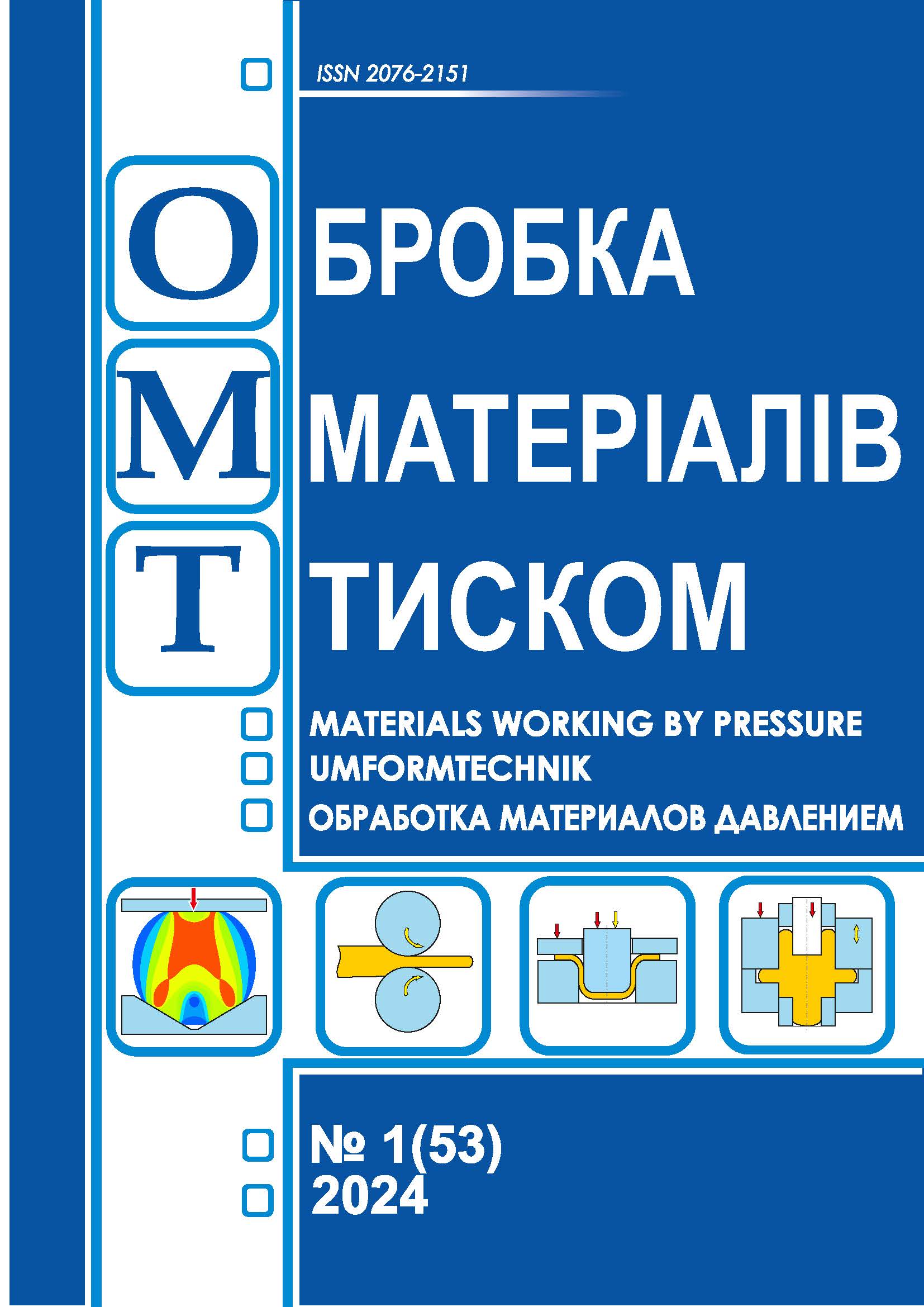Mathematical modelling of the stress-strain state during drawing of cored wire with a metal core
DOI:
https://doi.org/10.37142/2076-2151/2024-1(53)34Keywords:
modeling, stress-strain state, powder wire with a metal core, drawing, condition of plasticity for porous materials, tension, plastic deformation, reduction modesAbstract
Gribkov E., Malyhin S., Berezshna O.
Mathematical modelling of the stress-strain state during drawing of cored wire with a metal core
On the basis of the joint recurrent solution of the finite-difference form of the condition of static equilibrium of the selected elementary volume and the condition of plasticity of the powder medium, a numerical mathematical model of the stress-strain state was developed, which takes into account the real nature of the distributions of geometric parameters, mechanical properties and contact friction conditions during drawing of a powder wire with a metal core. Within the framework of the considered mathematical model of the stress-strain state during drawing of cored wire, it was assumed that the current values of the speed of movement of the powder material, its mechanical properties and normal axial stresses within each individual cross-section remain constant along the entire length of the deformation focus, changes in diameters, contact stresses are linear, and quantitative estimates of tangential stresses on the contact surface of the powder and monometallic components correspond to Amonton's law Under the condition of statistical equilibrium of the separated i-th elementary volume of the powder material, taking into account the piecewise linear approximation, taking into account the condition of plasticity for powder materials under axisymmetric loading and the influence of the value of the relative density on the values of the coefficients that take into account the specifics of the deformation of the powder composite, calculations of the ratio of plastic deformation rates, principal stresses and the ratio of the degree of deformation were obtained. Calculations of the relative density of the powder material within each individual i-th elementary volume were also obtained. The obtained dependences of the relative density of the powder core depending on the diameter of the metal core, reduction and tension of the powder wire, which make it possible to find rational values of these technological parameters when designing the technological modes of drawing.

